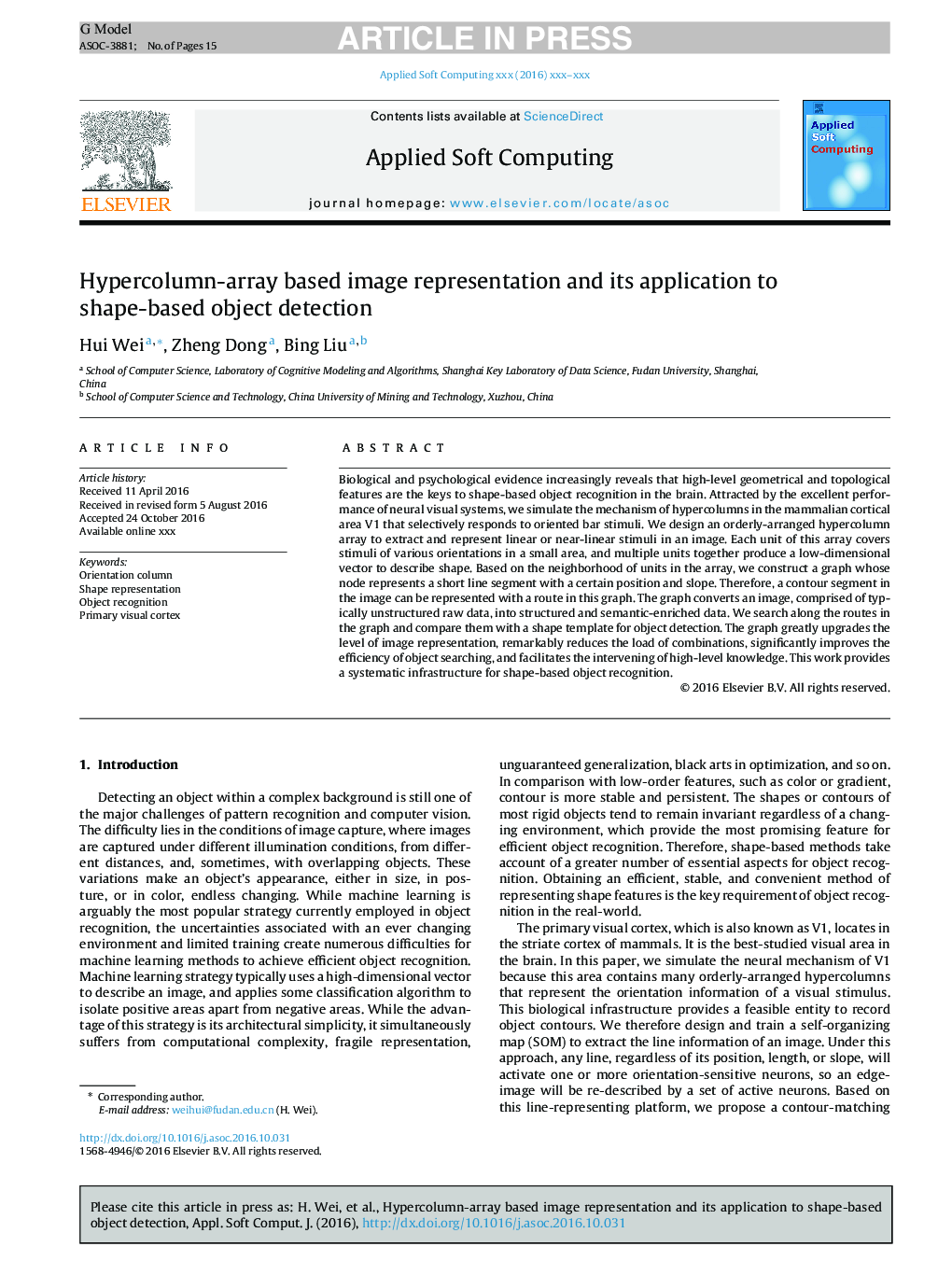| Article ID | Journal | Published Year | Pages | File Type |
|---|---|---|---|---|
| 4963469 | Applied Soft Computing | 2017 | 15 Pages |
Abstract
Biological and psychological evidence increasingly reveals that high-level geometrical and topological features are the keys to shape-based object recognition in the brain. Attracted by the excellent performance of neural visual systems, we simulate the mechanism of hypercolumns in the mammalian cortical area V1 that selectively responds to oriented bar stimuli. We design an orderly-arranged hypercolumn array to extract and represent linear or near-linear stimuli in an image. Each unit of this array covers stimuli of various orientations in a small area, and multiple units together produce a low-dimensional vector to describe shape. Based on the neighborhood of units in the array, we construct a graph whose node represents a short line segment with a certain position and slope. Therefore, a contour segment in the image can be represented with a route in this graph. The graph converts an image, comprised of typically unstructured raw data, into structured and semantic-enriched data. We search along the routes in the graph and compare them with a shape template for object detection. The graph greatly upgrades the level of image representation, remarkably reduces the load of combinations, significantly improves the efficiency of object searching, and facilitates the intervening of high-level knowledge. This work provides a systematic infrastructure for shape-based object recognition.
Related Topics
Physical Sciences and Engineering
Computer Science
Computer Science Applications
Authors
Hui Wei, Zheng Dong, Bing Liu,
